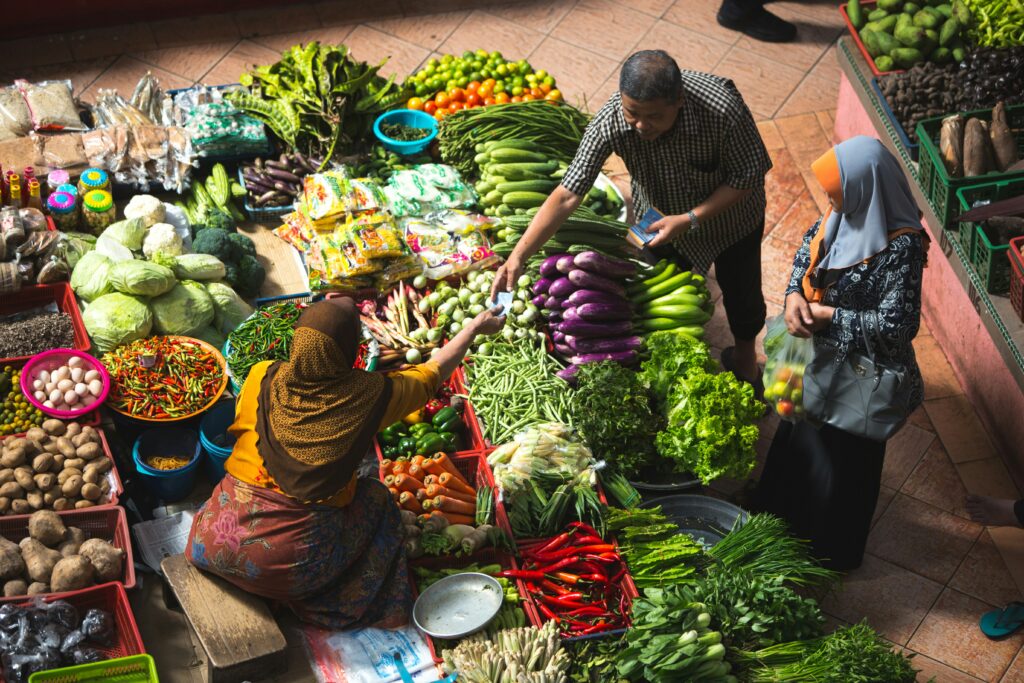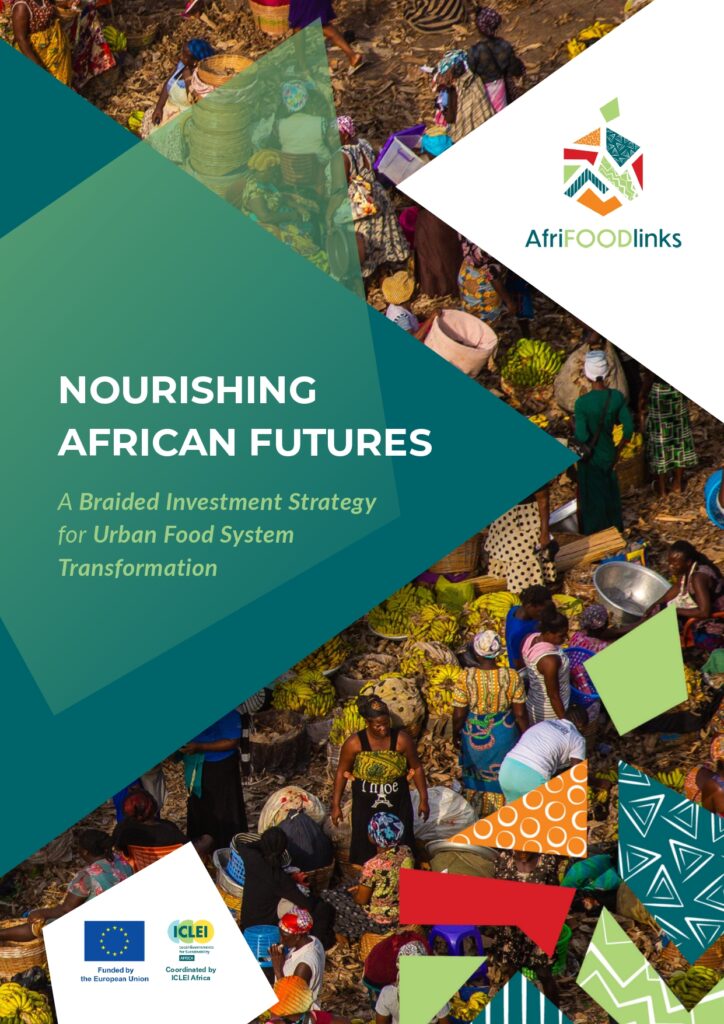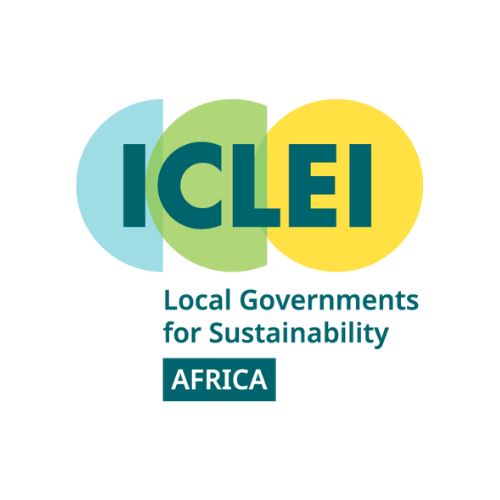Home » Explore the latest project news » Why science, labelling and simplicity matter for food safety
Why science, labelling and simplicity matter for food safety
In recognition of World Food Safety Day 2025, held on 7 June under the theme ‘Food Safety: Science in Action’, we explore how science is shaping the way we interpret and respond to food labelling and marketing. This reflection aligns closely with one of AfriFOODlinks core objectives: to promote sustainable, healthy diets and equitable food … Continued
In recognition of World Food Safety Day 2025, held on 7 June under the theme ‘Food Safety: Science in Action’, we explore how science is shaping the way we interpret and respond to food labelling and marketing. This reflection aligns closely with one of AfriFOODlinks core objectives: to promote sustainable, healthy diets and equitable food systems across African cities. As we work towards nourishing urban populations safely and fairly, it becomes clear that science must play an active role in how we communicate what’s in the food we eat.
The broader meaning of food safety
When people think of food safety, the focus is often on hygiene, proper storage or contamination risks. But food safety extends beyond these concerns: it also includes understanding what we’re consuming. In a market saturated with front-of-pack labels claiming ‘low fat,’ ‘sugar-free,’ or ‘organic,’ it’s easy to assume those terms reflect the product’s overall nutritional value. More often than not, they don’t.
These buzzwords can create what’s known as a ‘health halo’, suggesting a product is healthy overall when in reality, only one element has been modified. A ‘low fat’ product might still contain high levels of sugar; ‘sugar-free’ doesn’t mean calorie-free. Even when technically accurate, such claims can be incomplete and at times misleading.
This is where science becomes critical. Regulation and evidence-based guidelines, led by health and scientific authorities, help ensure that marketing claims are both truthful and meaningful.
‘’Transparency in regulation and public health data upholds dignity by fostering food systems that are both competitive and efficient, guided by rigorous research and expertise. Most importantly, just and resilient food systems build consumer trust, influence acceptability and preference, and ultimately safeguard dignity with every plate.’’
Rose Achieng, County Government of Kisumu
What appears on the front of a package should accurately reflect what’s inside. Alongside being accurate, labels must also be clear, accessible, and easy to interpret for all consumers. Without transparency and simplicity, even the most rigorous scientific standards risk being lost in translation.
The consumer perspective and the importance of clear labelling
Typically the first thing people notice when they pick up a product in store is the price, expiry date, allergens, country of origin, and general visual appeal. Very seldom do people mention checking the nutritional facts panel, and several have noted that reading and understanding the back of the package can feel like ‘a full-time job.’ This points to a clear gap: nutrition information needs to be more transparent and easier to navigate, especially on the front of the pack that often hastily informs purchasing decisions.
Recent research in South Africa reinforces this. A randomised controlled trial examined how different front-of-package labelling formats influenced consumer choices. The findings showed that simple nutrient warning labels (icons) that clearly indicate high levels of sugar, salt, or fat were significantly more effective at helping shoppers identify less healthy products than more complex systems such as traffic lights or daily intake charts. Similarly, a randomised experiment conducted in Mexico in 2020 found that red Warning Labels (WL) and Multiple Traffic Light (MTL) labels led to healthier shopping cart choices compared to the Guideline Daily Amounts (GDA) system. Together, these studies suggest that straightforward visual warnings are more easily understood across diverse populations and are more likely to prompt healthier consumer decisions.
Still, it’s important to acknowledge that front-of-pack labelling is not without criticism. In Europe, for example, several Southern European countries, including Italy, have raised concerns over systems like Nutri-Score, which rate food based on an algorithm that considers nutrient content. Critics argue that such labels overlook cultural and dietary context, particularly portion sizes and consumption patterns. For example, olive oil or Parmigiano Reggiano may receive lower scores due to their fat or salt content per 100 grams, despite being staples of the Mediterranean diet and widely recognised for their health benefits when consumed in moderation. Opponents worry that simplified scoring systems could mislead consumers into favouring ultra-processed foods with higher scores over traditional, nutrient-dense products with lower ratings. This doesn’t negate the value of front-of-pack labels, but it does highlight the ongoing need to make them not only clear and science-based, but also culturally and nutritionally realistic.
This research emphasises an important point: labelling only supports public health if people can interpret it. That’s where scientific literacy ‒ the ability to understand and apply scientific knowledge ‒ becomes essential. In communities where this kind of literacy is limited, consumers are more susceptible to persuasive terms like ‘natural,’ ‘clean,’ or ‘organic.’ These labels are often loosely defined and can mask a product’s true nutritional profile.
Science has a responsibility here. Health and nutrition claims must be more than just factually correct. They need to be understandable and actionable. A scientifically-valid label is of little use if the average shopper cannot decipher what it means.

Moving forward: science and simplicity for equitable food safety
World Food Safety Day reminds us that food safety is not only about pathogens or spoilage. It’s also about the accuracy, clarity and credibility of the information presented to consumers. Confusing or misleading labels can undermine healthy eating efforts and foster misplaced confidence in the safety or nutritional value of certain foods.
One of the pilot projects taking shape in Chefchaouen, Morocco, brings the principles of food labelling into the restaurant space. The city is piloting a Mediterranean Diet certification system to label restaurants that meet specific criteria related to health, sustainability, and local sourcing. Much like front-of-pack labels on food products, this initiative aims to simplify complex dietary information and turn it into clear, trustworthy signals for consumers.
‘’When shaped by science and upheld by trust, a label tells the story of the land, the hands that nurtured it, and the health it offers. It guides us back to our communities and the flavors of home.’’
Professor El Ati Jalila, AfriFOODLinks Project Manager, INNTA and an active member of Tunisia's national committee on food labelling
The goal is to help residents and tourists alike make more informed choices about where to eat, based not only on taste or price, but also on nutritional value and environmental impact. By certifying and promoting businesses that align with defined dietary and sourcing standards, the project enhances food quality and safety, supports local producers, and promotes sustainable tourism. It shows how the principles of scientific labelling can extend beyond packaging and into the everyday food environments that shape our diets.
As AfriFOODlinks continues to support cities in building fairer, more resilient food systems, one thing is clear: the future of food safety must be guided by both scientific rigour and simplicity in communication. Only then can we empower all consumers to make informed and confident decisions about the food they eat.
Explore
"Governance"





